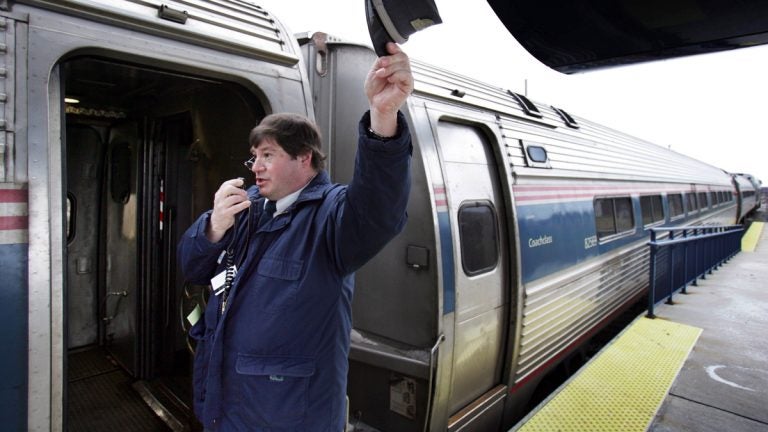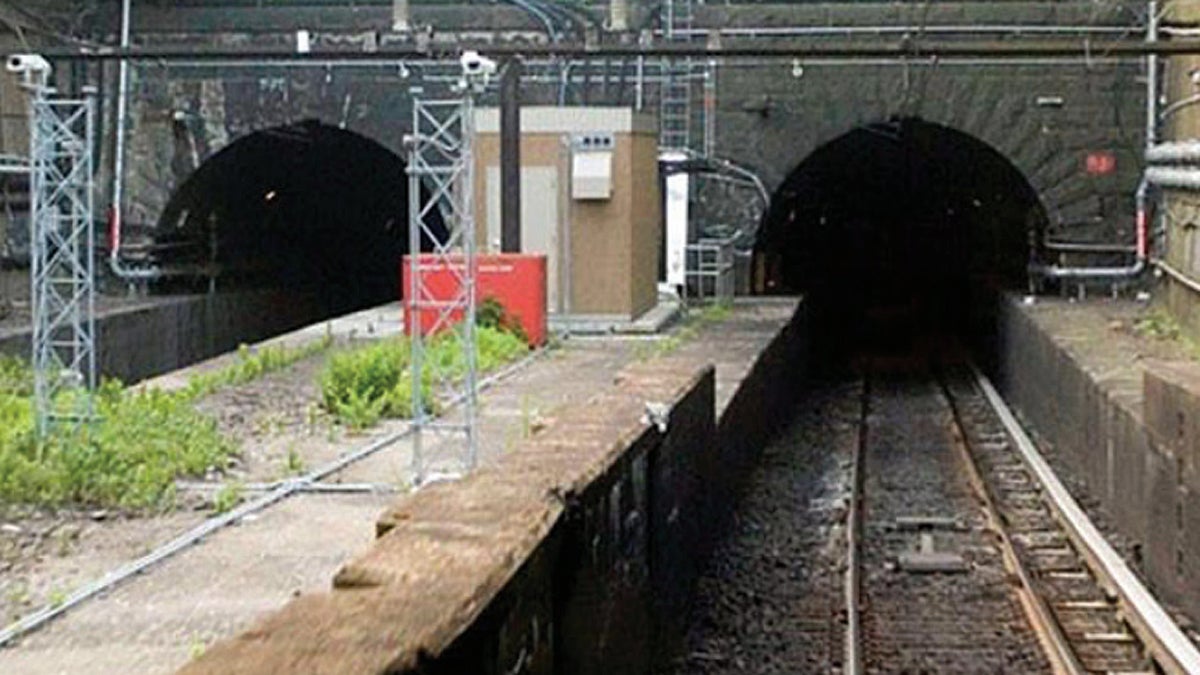Amtrak’s Gateway Project up for discussion in Trenton Monday

(AP Photo/Robert F. Bukaty, file)
In the midst of what’s been a particularly difficult summer for New Jersey commuters thanks to crushing rail delays and a looming fare hike, state lawmakers are planning to hold hearings beginning Monday to dig deeper into the state’s mass-transit problems.
 First on the list of topics to cover for the Senate Legislative Oversight Committee will be Amtrak’s stalled Gateway tunnel project, a proposed multibillion dollar effort to ease the region’s overreliance on two 105-year-old tunnels that Amtrak and New Jersey Transit currently use to transport commuters under the Hudson River.
First on the list of topics to cover for the Senate Legislative Oversight Committee will be Amtrak’s stalled Gateway tunnel project, a proposed multibillion dollar effort to ease the region’s overreliance on two 105-year-old tunnels that Amtrak and New Jersey Transit currently use to transport commuters under the Hudson River.
Stephen Gardner, Amtrak’s vice president for Northeast corridor investment and infrastructure development, is slated to provide a status update on the Gateway project during the oversight committee’s 10 a.m. meeting in Trenton.
In addition to the Gateway project, the lawmakers also plan to look closer at the long-term plans for New Jersey Transit and the state’s broader transportation network. Senate aides said that besides Gardner the committee will hear from other transportation and transit experts and advocates.
It was a bout of electrical problems that in mid-July caused the major delays suffered by commuters who use the two tunnels to get to work, affecting not only the Amtrak-owned Northeast corridor but also other rail and bus routes in the region.
The two tunnels were already due for major repairs following damage caused by 2012’s superstorm Sandy, but last month’s delays in the midst of a heat wave generated a renewed interest in the region’s aging infrastructure and what is – and isn’t – being done to fix it.
While federal officials have already said Gateway is their top rail priority, Amtrak doesn’t have the funds to cover the entire project’s cost on its own, which could climb as high as $15 billion. And so far it’s drawn only passing interest — and no firm funding commitments — from Gov. Andrew Cuomo in New York and Gov. Chris Christie in New Jersey. It was Christie who in 2010 killed the last major effort to replace the Hudson River tunnels over cost concerns.
“The tunnel repairs forced the diversion of Midtown Direct trains to Hoboken, severely overcrowded PATH trains and buses, and exacerbated traffic delays for motorists. We need to know why,” said Sen. Robert Gordon, the chair of the oversight committee.
“We also need to know what long-range contingency plans NJ Transit and Amtrak have in place in case one of these Sandy-damaged tunnels has to close not for a few hours, but for 18 months, sometime during the next 10 years before a new rail tunnel can be built,” said Gordon (D-Bergen). “We need to know the status of financing plans for Amtrak’s proposed Gateway rail tunnel, and what we need to do to expand trans-Hudson rail capacity.”
Other transportation experts expected to be called by the committee include Tom Bracken, the chairman of Forward New Jersey, a coalition of 75 organizations, including labor, business groups, and local-government advocates, that has been pressing leaders in Trenton to do more to address the state’s crumbling transportation network.
Also scheduled to testify is Janna Chernetz, senior New Jersey policy analyst for the Tri-State Transportation Campaign, Senate aides said.
Monday’s meeting will be the first in a pair that the oversight panel is planning to hold on the state’s transportation issues. The second hearing, currently scheduled for September, will feature New Jersey Department of Transportation Commissioner Jamie Fox and New Jersey Transit Executive Director Veronique Hakim.
The hearings come as the future of the state Transportation Trust Fund — the pot of money that finances roughly $1.6 billion in annual road, bridge, and rail spending while also leveraging federal matching funds — remains up in the air.
The trust fund is on course to run out of money by June 30, 2016, and right now, Christie, a second-term Republican, has yet to lay out a long-term plan to keep transportation spending uninterrupted.
Many believe the state will ultimately have to increase New Jersey’s 14.5-cent gas tax, something Christie was able to avoid in the five-year transportation-spending plan he put forward back in 2011.
That plan promoted the use of “pay-as-you-go” funding out of the annual state budget, but Christie ended up reversing course and has largely followed the habits of his predecessors by relying heavily on new borrowing. He’s also redeployed money that was originally earmarked for the tunnel project he canceled in 2010 to sustain the trust fund.
Also facing an uncertain fiscal outlook is New Jersey Transit, which is funded primarily by commuter fares and state subsidies. The agency is preparing to hike fares by 9 percent and cut back some services on October 1 to keep its budget in balance. But advocates warn another budget gap is already on the horizon.
Senate Majority Leader Loretta Weinberg (D-Bergen) cited the agency’s operating deficits as one her top concerns. “We’re concerned that NJ Transit has another deficit looming next year when $295 million in NJ Turnpike money that has been used to cover NJ Transit operations is scheduled to go away,” she said.
The oversight committee, which is controlled by Democrats, has held in-depth hearings in recent years on a number of high-profile issues. They include concerns about the state’s ongoing recovery from Sandy and escapes, bouts of violence, and other problems that have beset New Jersey’s system of privatized halfway houses.
And in June the oversight committee held a hearing on the fees that have been paid to private money managers hired by the state to handle the investment of some public-employee pension-system assets.
_________________________________________________
NJ Spotlight, an independent online news service on issues critical to New Jersey, makes its in-depth reporting available to NewsWorks.
WHYY is your source for fact-based, in-depth journalism and information. As a nonprofit organization, we rely on financial support from readers like you. Please give today.




